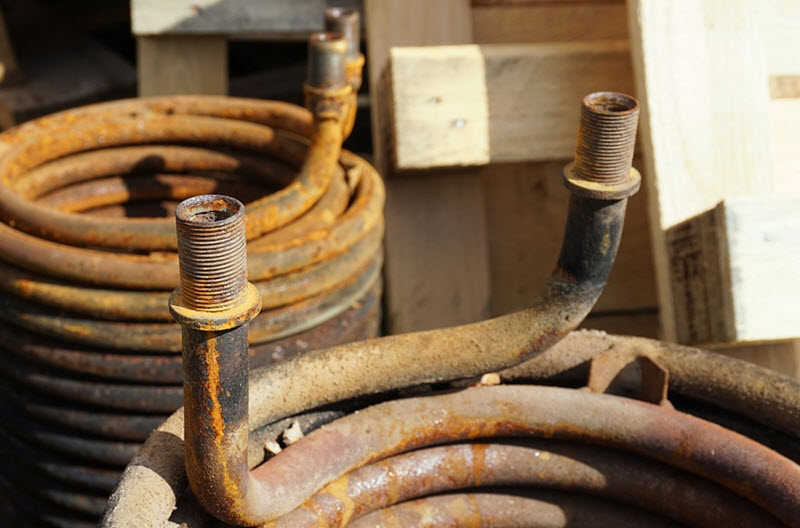Solar panels
A solar panel is an assembly of solar cells (photo-voltaic cells) mounted in a framework. A system of such panels is known as an array, and installing an array can provide a home with a substantial amount of electric energy if light conditions are sufficient. It should be noted that tropical sun is by no means a requirement for modern solar panels and they are being successfully used by homeowners even at far northern and far southern latitudes.

For residential buildings, the roof-top array is the most common solution, but solar arrays can be ground-mounted as well or mounted on their own bespoke tall structure near the home. A rooftop solar panel system for a residential building will typically be comprised of the solar modules, the mounting system, cables, solar inverters and certain other electrical accessories.
At the time of writing, rooftop solar systems on residential buildings typically have a capacity within the 5 kW – 20 kW range if they are intended to supply electricity for just one household.
Solar shingles
Solar shingles are solar panels designed to not just look like but also function as conventional roof shingles. They belong to a group of solar energy systems known as building-integrated photovoltaics (BIPV).
Examples of commercially available solar shingle solutions:
- Shingle-sixed solid panels that will take the place of a number of traditional shingles in a strip
- Semi-rigid designs comprised of several silicon solar cells sized like traditional shingles
- Thin-film solar cell systems that match traditional shingles and size and flexibility
Wind turbine
A wind turbine can provide a home with power by turning the wind´s kinetic energy into electricity. Wind turbines for home use come in a wide range of sizes and designs, including both horizontal and vertical axes.

Really small wind turbines can provide auxiliary power to houseboats, caravans and similar, but are usually not enough to be the main power source for a household. For houses, one or more larger windmills that require a more sturdy installation tend to be a better option. Larger windmills can be obtained with geared power trains, alternating current output capacity and the ability to turn to point into the wind. Wind turbines for home use are typically in the 20 watts to 400 kilowatts range.
Two commonly used materials for wind turbine blades are glass fibre and carbon fibre. A common choice is using glass/epoxy composites that contain up to 75% glass by weight, to get the desired stiffness, tensile strength and compression strength for an affordable price. Compared to glass fibre, carbon fibre has more stiffness, lower density and more tensile strength. It is also up to ten times more expensive than glass fibre.
Invest money in green energy stock.
Installing green energy in your home can often be rather expensive. If you do not want to invest the money necessary money to green your home you can still earn money by investing in green energy companies. Cheap stockbrokers make it possible to invest a small amount in green energy companies. This allows you to earn money from the green revolution even if you can only invest a few hundred dollars. Learn more about investing in stocks.
Hydropower
Private hydropower refers to the small-scale generation of electricity through the utilization of the natural flow of water, generally owned and operated by individuals, businesses, or small communities. These hydroelectric installations are often seen as a more sustainable and self-sufficient alternative to relying on large-scale, grid-based power sources. Below, we’ll explore various aspects of private hydropower, including its advantages, setup, and considerations for implementation.
Understanding Private HydroPower
Type of Installations
Private hydropower installations can be categorized into micro, mini, and small-scale hydroelectric systems. Micro-hydro systems typically generate power under 100 kW, which is suitable for individual households or small businesses. Mini-hydro systems have capacities from 100 kW to 1 MW, serving a community or a large business. Small-scale hydro projects range from 1 MW to 10 MW, often used for industrial applications or selling power back to the grid.
Components and Working
The fundamental components of a hydroelectric system include a water source with flowing water, a turbine, a generator, a regulator, and distribution wiring. Water flows over the turbine causing it to spin, which turns a generator, producing electricity. The regulator controls the output, and the distribution wiring carries the electricity to where it is needed.
Advantages of Private HydroPower
Sustainable Energy Source
One of the primary benefits of private hydropower is its sustainability. Unlike fossil fuels, it relies on the renewable resource of flowing water. It produces a continuous power supply without producing greenhouse gases.
Energy Independence and Cost-Efficiency
Implementing a private hydropower system can lead to energy independence, as reliance on the national grid or diesel generators is reduced. In the long term, this can result in significant cost savings on electricity bills.
Potential Revenue Generation
In some cases, excess power generated by private hydro systems can be sold back to the grid, creating a source of revenue for the owner.
Considerations and Challenges
Legal and Environmental Regulations
Private individuals or entities looking to set up a hydropower system need to be aware of and comply with local, regional, and national regulations concerning water use and environmental impact.
Initial Investment and Maintenance
Setting up a private hydropower system requires a significant initial investment. Additionally, the maintenance of the system over time is crucial to ensure its longevity and efficiency.
Site Selection and Water Flow
A critical aspect of setting up a private hydropower system is site selection. The site needs to have a reliable water source with sufficient flow and drop (head) to make the installation viable.
Downhole heat exchanger (DHE)
A downhole heat exchanger is used to capture or dissipate heat to or from the ground and can be used for geothermal heating of a building. It is often combined with a geothermal heat pump.
DHE:s have become popular for residential house heating in northern Europe, but are still fairly unknown in the rest of the world.

Two types of downhole heat exchangers
- U-tube DHEIn this type of DHE, there is one or two u-tubes for the carrier fluid. The carrier fluid (normally water) circulates through these. The space around the u-tubes is filled with groundwater or backfilled with thermally conductive grout.
- Open pipe DHEThe water flows downward through a single open pipe, and then returns through a ring-shaped gap located between the pipe and the casing. Compared to the U-tube DHE, this system has better thermal contact. A downside is the increased risk of contamination by groundwater.